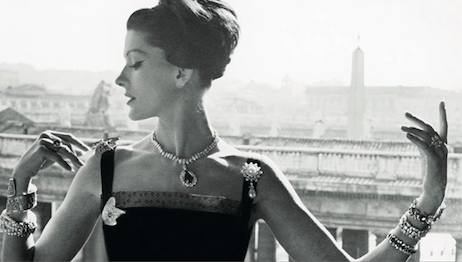 Poster for "Bulgari and Rome'
Poster for "Bulgari and Rome'
Italian jeweler Bulgari is tracing the ways in which its hometown of Rome has inspired its designs through an exhibit at Madrid’s Museo Thyssen-Bornemisza.
“Bulgari and Rome,” up from Nov. 30, features more than 140 archival pieces that demonstrate the influence the Eternal City’s art and architecture have had on Bulgari’s jewels. The relationship between Bulgari's references and its finished pieces are subtle, making this exhibit an opportunity to educate both consumers and aspirational fans on the origins of its jewelry.
Buildings to baubles
Included in the pieces on display are jewels from Bulgari’s Heritage Collection. These are presented alongside items from private collections, including that of Baroness Thyssen.
Throughout Bulgari’s more than 130 years, the house’s designers have been inspired by the shapes of iconic landmarks such as the Colosseum, the Spanish Steps and the Pantheon. Ruins have led to geometrical designs, while gems are carved to resemble the domed shapes present in the city’s landscape.
Fleshing out the exhibit are works from artists such as Canaletto, Gaspar van Wittel, Ippolito Caffi and Arthur John Struttthat that capture Rome.
The exhibit will be up through Feb. 26.
Bulgari has shown its dedication to Rome's architecture in efforts that last longer than an exhibit.
In 2014, as the LVMH-owned jewelry brand celebrated its 130th anniversary, the jeweler pledged approximately $2 million for the restoration of the Spanish Steps over a two-year period. The project began in 2015, and worked to restore the iconic Italian landmark to its former glory after Italian prime minister Matteo Renzi asked private investors to aid in maintaining monuments throughout the country (see story).
